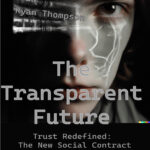The Future of Truth: Unveiling the Evolution and Potential of Lie Detection Technology
In our relentless quest for the truth, the evolution of lie detection technology stands as a testament to human ingenuity and the desire for integrity. From rudimentary methods to sophisticated AI-driven systems, this journey is marked by innovations that inch us closer to what was once thought impossible – a world where lies are no longer hidden.
The Journey from Polygraph to AI: Current Technologies in Lie Detection
Lie detection has come a long way from its early days of the polygraph, a device measuring physiological responses like heart rate and sweating, to indicate deceit. While popular, the polygraph’s reliability has been a subject of debate, leading to the exploration of more advanced methods.
Recent advancements in lie detection leverage a blend of behavioral psychology, neuroscience, and technology. One such method is the use of functional magnetic resonance imaging (fMRI) to observe brain activity patterns that differ when a person is deceptive compared to when they are truthful. Eye-tracking technology and voice stress analysis are other methods in play, each with its strengths and limitations.
The integration of artificial intelligence and machine learning represents a significant leap in this field. Current technologies employ complex algorithms that analyze a myriad of factors, including micro-expressions, speech patterns, and even brain waves. These systems continually learn from vast datasets, enhancing their accuracy and reliability.
The Cutting Edge: Emerging Projects and Theoretical Advancements
Looking ahead, numerous projects aim to push the boundaries of lie detection technology. One area of focus is the development of algorithms that can more accurately interpret physiological and behavioral data. Research into neural patterns associated with deception is also gaining momentum, with the potential to revolutionize the field.
The theoretical possibility of achieving 100% accuracy in lie detection would require groundbreaking advances in neuroscience and artificial intelligence. This entails real-time, comprehensive analysis of an individual’s verbal and non-verbal cues, potentially combined with deep neurological insights.
Envisioning a World of Absolute Truth: Societal Implications
The implications of a lie-proof world are profound. In legal and criminal justice systems, infallible lie detection could ensure fairness and accuracy in trials. However, this raises ethical concerns about privacy and the potential misuse of such technology.
Interpersonal relationships would also undergo a transformation in a world where deceit is impossible. While honesty could foster deeper trust and understanding, the absence of privacy might strain social interactions.
Conclusion: Navigating the Future of Lie Detection
As we venture further into the realm of advanced lie detection, it’s vital to balance the pursuit of truth with ethical considerations and respect for individual privacy. The evolution from polygraphs to AI-driven systems reflects our complex relationship with truth and deception. As this technology continues to advance, we must grapple with its implications, ensuring that our quest for truth upholds the values of justice and human dignity.
Reference Section
- fMRI-Based Lie Detection: Studies exploring the use of functional magnetic resonance imaging to detect deception by observing brain activity.
- Eye-Tracking Technology: Projects focusing on the correlation between eye movements and deception.
- Voice Stress Analysis: Research into analyzing vocal patterns to detect stress and dishonesty.
- AI and Machine Learning in Lie Detection: Development of algorithms that interpret a combination of physiological and behavioral data for lie detection.
- Neurological Pattern Research: Advanced studies looking into specific brain patterns associated with lying, using emerging neuroimaging technologies.









No Comments